At NVIDIA GTC 2024, we got to see the new Astera Labs Aries 6 PCIe Gen6 and CXL retimer. That is a big deal because Astera Labs is the incumbent in the market that Broadcom is trying to match in the PCIe Gen6 era. The difference is that Astera Labs appears to be first to silicon and sampling to customers to the point that it is also being publicly shown.
This is the Astera Labs Aries 6 PCIe Gen6 and CXL Retimer
First off, a PCIe retimer one can think of, at a very high-level, as a signal repeater. As PCIe generations get faster, PCIe over PCB trace lengths have decreased substantially. At the same time, systems have gotten physically larger. As a result, PCIe has to go further, but the actual reach is shorter, hence the need for retimers. Here is a great example of the Astera Labs PCIe retimers in an NVIDIA AI server.
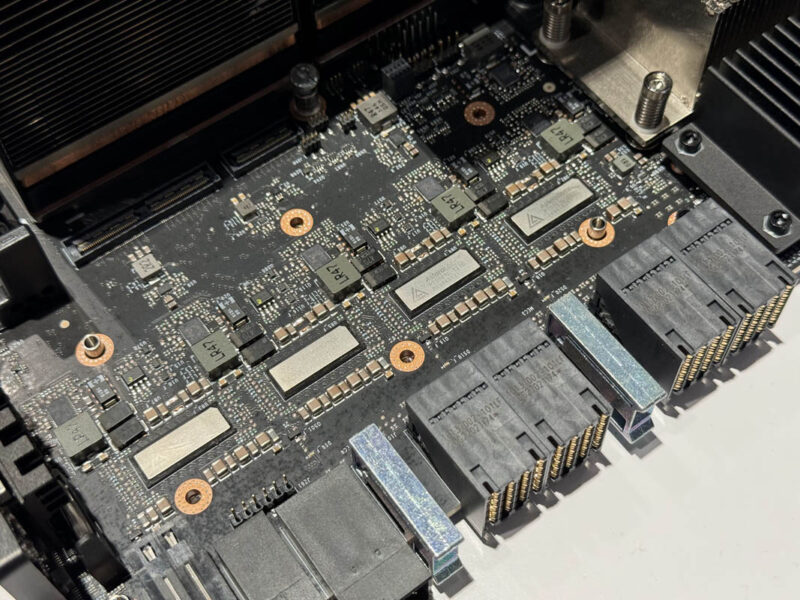
The actual retimers are not the highest power, and certainly not the most expensive parts of the chassis, but there are quite a few of them. Astera Labs has its own format for a retimer and as you can see the Aries 6 for the PCIe Gen6 / CXL era looks very similar to the Aries 5 part that is shipping in volume today.
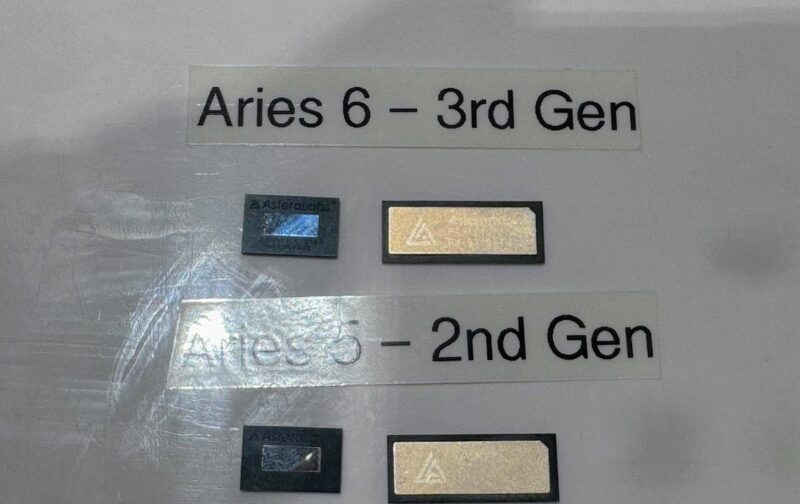
We also got to see the development board. One can see the connectors on the top and bottom and the Aries 6 retimer in the middle. This allows the company to test different combinations of endpoints in an interoperability lab but also for customers to test their next-gen hardware designs.
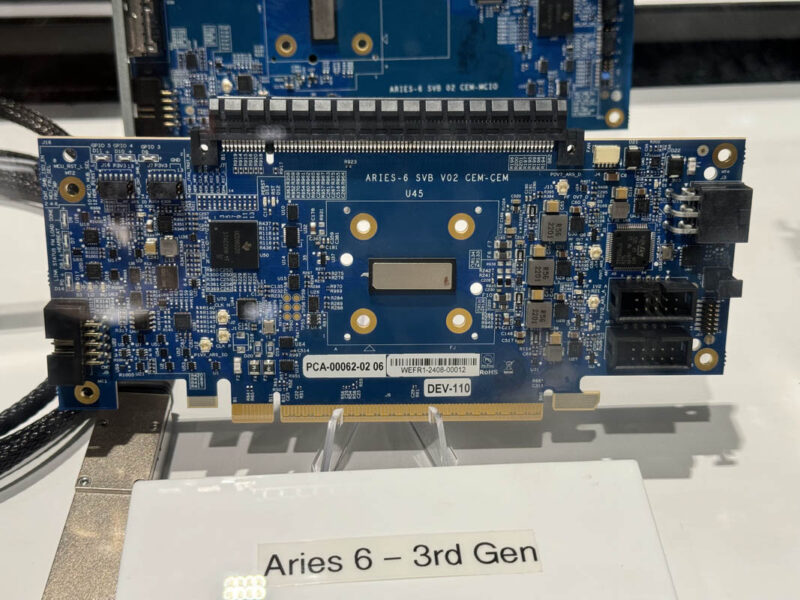
Here is a demo of the card running on the show floor.
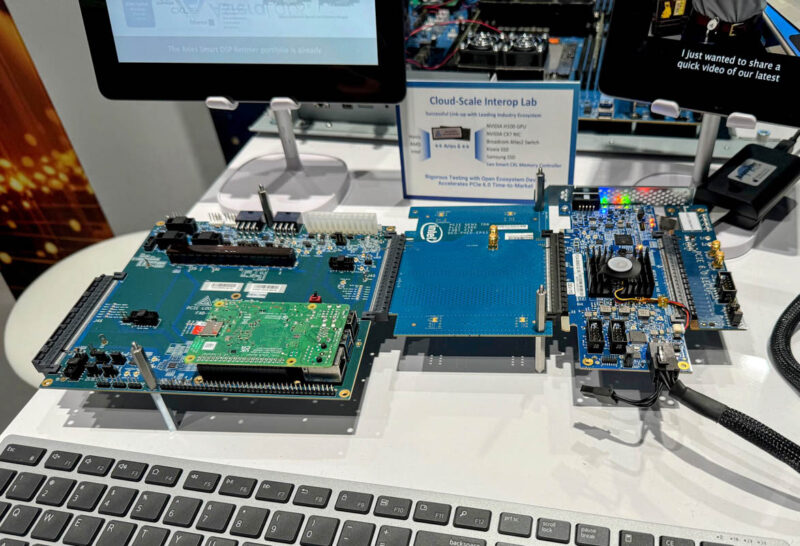
At GTC 2024, the Aries 6 was linked at PCIe Gen6 x16 speeds at 10-11W of power consumption. That is a big deal since it is lower than Broadcom is claiming with its new retimers.
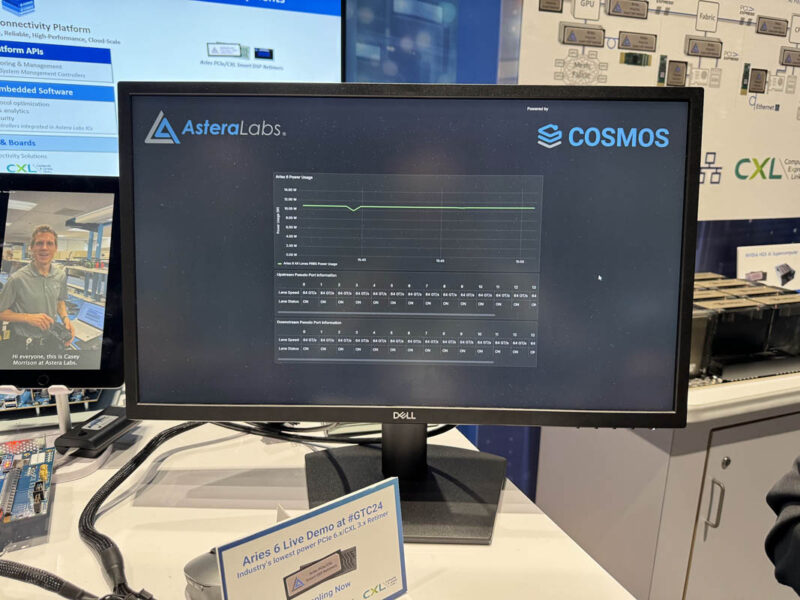
We also covered Astera Labs COSMOS. Here is the telemetry and we can see it running at 11W.
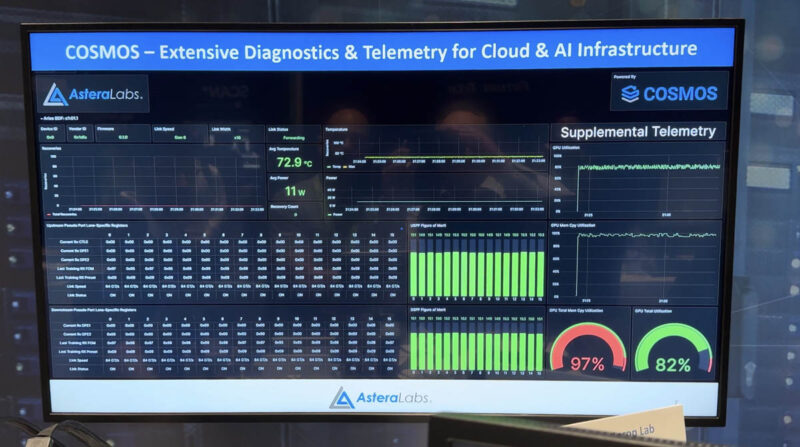
That was the first time we have seen that running.
Bonus Astera Labs Aurora A1000 Leo CXL Card
We also saw an Aurora A1000 CXL card. If you have seen one of our recent videos over the last year or so, there was an older version of the card on the set just as something cool. These cards take a PCIe Gen5 x16 slot, and occupy a double-width slot, but they have a cool trick. One can add memory to this card, put it into an AMD EPYC Genoa/ Bergamo server or a 5th Gen Intel Xeon Emerald Rapids server, and expand the amount of RAM in the system as well as add additional memory bandwidth with each CXL card added.
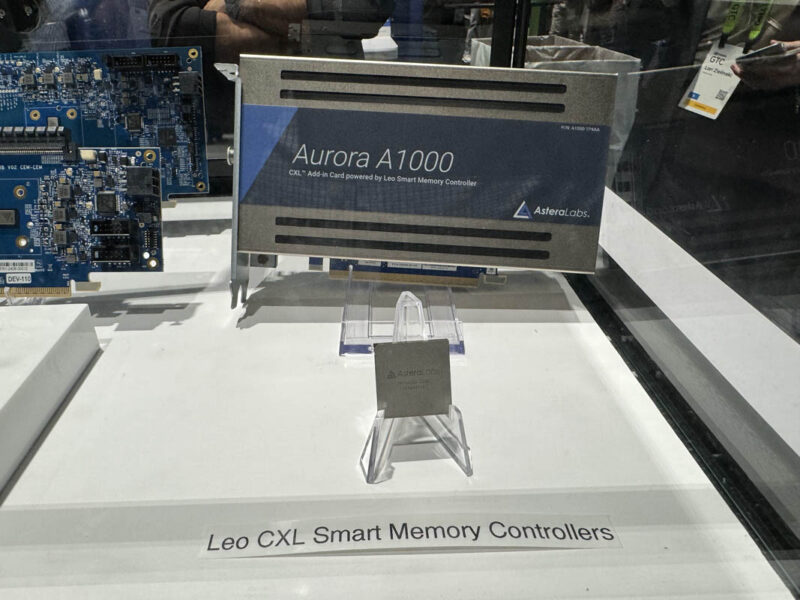
Now, there is a version with new firmware, and we will be showing that off soon.
Final Words
Overall, this is a great update. The PCIe retimers may not sound the most exciting, but consider this, Astera Labs had its IPO a few weeks ago and has a ~$10.5B market cap. The parts may not be as exciting as AI accelerators, but they seem to be useful.
Since we got a lot of requests for consulting calls on the PCIe retimer market after our previous pieces, and with the company’s IPO, we have an Axautik Group LLC Research Short for the Astera Labs and Broadcom releases to answer some of the common questions we have gotten from folks on the investing side.

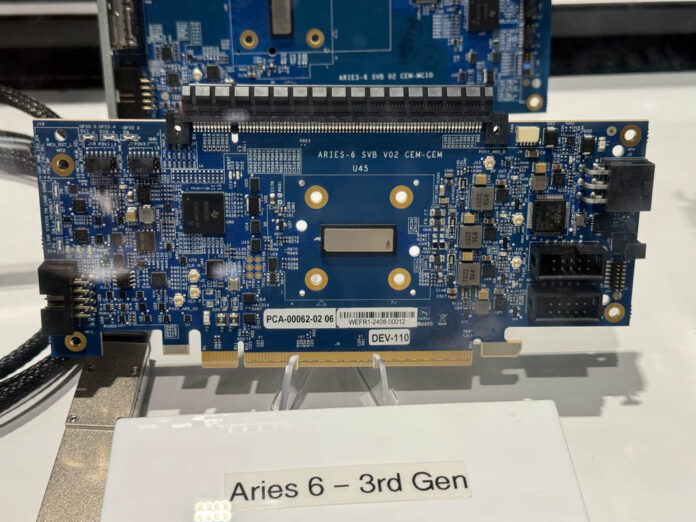


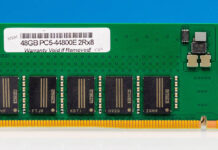
I absolutely *love* STH and all the free content you provide. Patrick is also a hoot to watch in the YouTube videos, as evidenced by many appearances in my viewing history. So don’t take this the wrong way, but, how in the world does a CXL retimer fit into the home lab storyline. I mean, is this something people are doing in their home labs? If so, I need to step my game up (and get another job or two).
Aaron – why is STH only home lab in your mind? We were doing blade system reviews 8 years ago and 8x GPU AI server reviews 7 years ago. It is very strange to hear? It would be like asking why does the Wall Street Journal not only report about a single road in NYC.
All in jest Patrick. I’ve been spending a lot more time on STH as I rebuild my homelab, using bits and pieces us mere mortals can afford, of course. I can dig these reviews of drool-worthy equipment I’ll never be able to afford, so please keep em coming. I really do appreciate everything you all do over there.